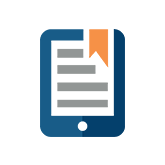Why Annual Budgeting Has Become a Thing of The Past

In the ever changing work environment, tension is bound to arise between the age old practices, and the innovative, new ideas. This is especially true in the world of finance. Why tinker with traditional business practices if everything is swell? Finance is the backbone for any organization, so any concerns about any changes in methodology are understandable.
However, as today’s culture ideology of out of the box thinking begins to alter every corner of business, approaches to processes such as budgeting and forecasting are always changing. Being nimble and flexible is now the name of the game, and if your company’s finances can’t keep up with ever-changing scenarios, you risk profits and growth
That’s why many businesses are reconsidering their use of static annual budgets in favor of the more flexible rolling forecast. Here’s why you should consider conducting rolling forecasts
Resources
Annual Budget:
Everyone is quite familiar with the intensive work that is associated with slaving together an annual budget each year. Well in advance of the new financial period, man hour upon man hour is put into its preparation – research, data evaluation and input, review. Resources that could be applied elsewhere are tied up in this one process for what seems like ages, as everything must be completed before the new fiscal year begins.
Rolling Forecasts:
On the other hand, this process is ongoing throughout the entire year. Rather than leaving the task of an annual budget to snowball, and tackling the budget in one shot, rolling forecasts see tweaks and changes made monthly or quarterly. An investment of resources is not required all at one time – instead, the workload is spread out over the span of an entire 12 months.
Flexibility
Annual Budget
Research into past and current trends determines the plan for the entire upcoming fiscal year. Nonetheless, this data is already out of date by a couple of months into the new year. But because the annual budget is static, changes are not made until the following year.
Rolling Forecasts:
This method allows the business to stay up with current trends as they update their data monthly. It also allows for executives to quickly and easily adapt to changing market conditions such as cost fluctuations, changes in the economy, and new competitors.
Outlook
Annual Budget
With doing annual budgets, you are forecasting for the next 12 months, and count down to zero as you go. Anyone wishing to look beyond the remaining months in the budget must simply wait until the next year’s budget is put together.
Rolling Forecasts:
When a rolling forecast is put in place, businesses are able to have the option of a 12-month forecast available. As each month or quarter passes and falls off the plan, another month or quarter is simply added to the end. As a result, there is always up-to-date, long-term data accessible when important decisions need to be made.
By using rolling forecasts, your organization’s financial plan can become a living, breathing organism that can pivot easily as needed and adapt to changing conditions when needed. The True Sky Planning, Budgeting and Forecasting solution allows you to shift your business from annual budgeting to rolling forecasts, in order to provide more accurate and up-to-date business decision making information for your company.
Our True Sky software has been hailed by Brian Armstrong, former CFO at Microsoft Canada, as an elegant solution to this common business issue: “The elegance of the True Sky product is that it harnesses the power of Microsoft Excel and SQL Server to deliver a solid and flexible solution for planning, forecasting and budgeting.”
To learn more about True Sky and all our budgeting and forecasting solutions, sign up for one our webinars today!



